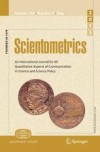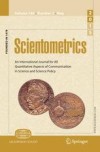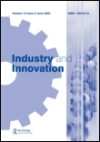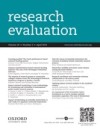Olmeda-Gómez, C., Ovalle-Perandones, M.A., Moya-Anegon, F. (2015) Analysis of research collaboration between universities and private companies in Spain based on joint scientific publications. Information Research 20(4): 692
Abstract

Abstract. A graphical interface designed to access the bibliometric indicators database of the SCImago Journal & Country Rank portal (http://scimagojr.com/shapeofscience) is described. The map was generated from the relational matrix based on the citation, co-citation, and bibliographic coupling formed by the nearly 20,000 publications (journals and conference proceedings) registered in Scopus. The map layout is based on a variant of a force-directed algorithm using Noacks proposal of an edge-repulsion energy model.
Resumen. Se analiza la investigación española en células madre en el Science Citation Index (SCI) entre 1997 y 2010 con una división temporal en tres sub-períodos, mediante técnicas de visualización basadas en redes sociales. Se han utilizado los descriptores KeyWords Plus (KW+) como unidad de análisis, su coocurrencia como unidad de medida, y Pajek y VOSviewer como herramientas para la generación y visualización de redes sociales.

Abstract
Purpose
The purpose of this paper is to visualize the structure of SCImago Journal & Country Rank (SJR) coverage of the extensive citation network of Scopus journals, examining this bibliometric portal through an alternative approach, applying clustering and visualization techniques to a combination of citation-based links.

Abstract. This paper presents a comparative benchmarking of scientometric indicators to characterize the patterns of publication and research performance at the country level, in a specific field (nanoscience and nanotechnology) during the period 2003–2013. The aim was to assess how decisive collaboration may be in attaining a sound level of scientific performance, and how important leadership is for publication.

Abstract. Cuba has developed a biopharmaceutical sector that involves some of the country’s most relevant scientific institutions. Despite the severe constraints on resources resulting from the U.S. embargo, the results achieved by this sector have contributed to put the country’s health indicators at the same level of high-income nations.

Abstract. Comparative benchmarking with bibliometric indicators can be an aid in decision-making with regard to research management. This study aims to characterize scientific performance in a domain (Public Health) by the institutions of a country (Cuba), taking as reference world output and regional output (other Latin American centers) during the period 2003–2012. A new approach is used here to assess to what extent the leadership of a specific institution can change its citation impact.

Abstract. Several studies have described a perspective among citizens that entails a negative image of public administration or civil servants that persists even after positive encounters and experiences. However, this ambivalent attitude has rarely been studied empirically. The authors refer to this attitude as “bureauphobia” and seek to enhance the existing literature through an analysis of its scope and root causes in Spain. The article analyzes two surveys conducted in 2009 and 2010, elaborating two alternative measures of bureauphobia.

Abstract. Using contract-level data, we study the relation between the inclusion of know-how in cross-border patent licensing agreements and the contractual terms used by firms to deal with moral hazard risks. We use official data on international technology contracts with patent licensing terms registered by affiliated and unaffiliated parties before the Department of Technology Transfer of the National Institute of Intellectual Property (INPI) in Brazil between 1996 and 2012.

Abstract. Universities are structured and behave as organizations. This article analyses universities’ responses to the changes in the institutional environment of research funding that the European Research Council (ERC) represents. First, we develop a two-dimensional typology constructed upon universities’ commitment to ways of acting and the existence of organizational capabilities. We identify four ‘ideal types’: committed, hesitant, operational, and neglected.